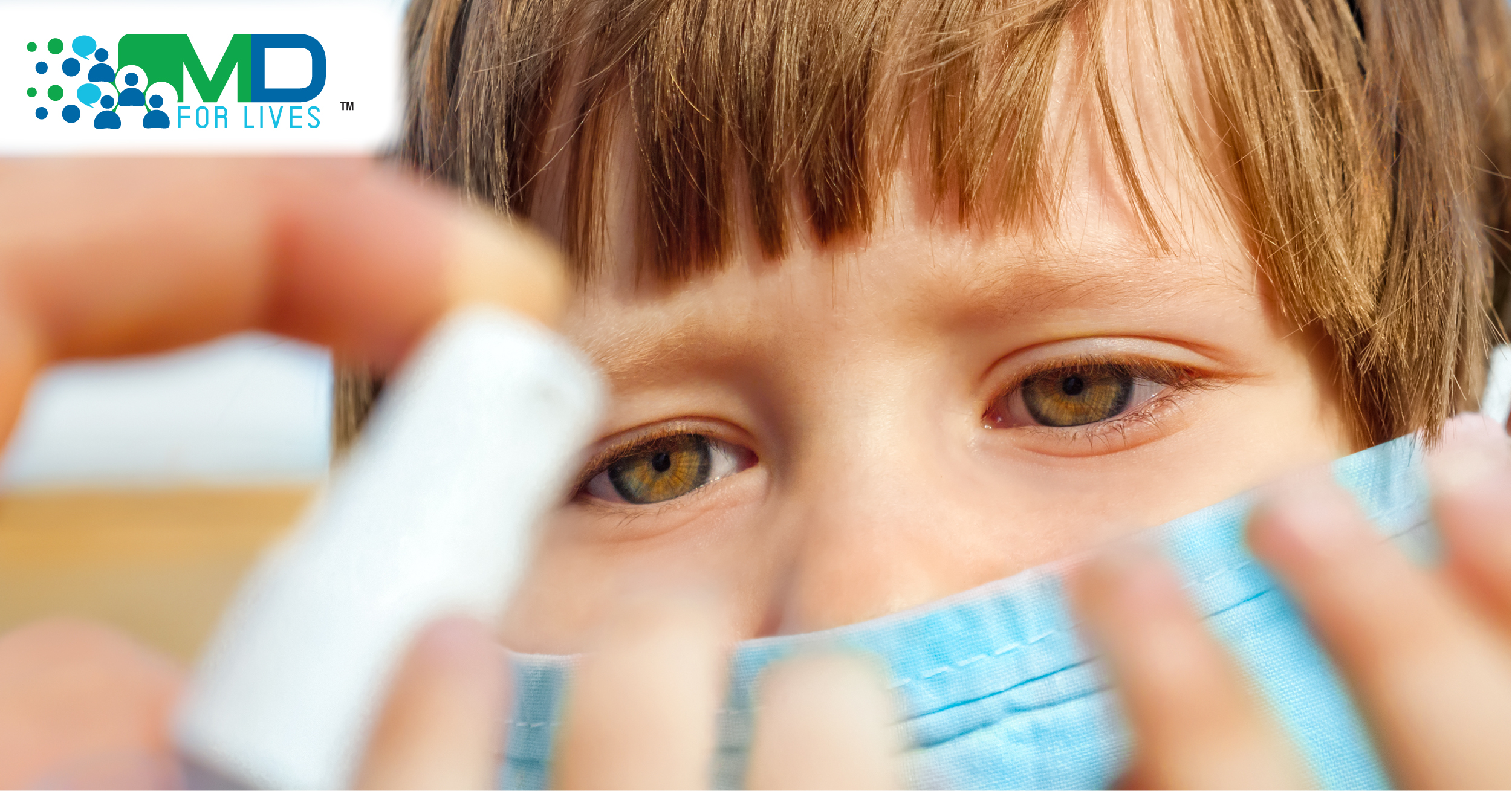Two studies published in JAMA Ophthalmology on Jan. 21, 2021 highlight the risk of childhood eye injury from accidental exposure to hand sanitizers during the COVID-19 pandemic.
The first study, based on research in France, reports a seven-fold increase in pediatric eye exposures to hand sanitizer during the spring and summer of 2020, compared to the same period in 2019. The second study from India, describes two cases of children with ocular injury from accidental hand sanitizer exposure.
Hand sanitizer is an important part of the public health picture during the COVID-19 pandemic. Major health bodies including the CDC recommend the use of alcohol-based hand sanitizers (ABHS) when handwashing facilities are not available, and recommends ABHS as an important means of preventing the spread of COVID-19.3 Hand sanitizer availability is required at schools, shops, and other public places in many parts of the world.
Several risks associated with alcohol-based hand sanitizers have been in the news lately. An effective ABHS should contain between 60% and 95% of alcohol, usually ethanol or isopropanol.3 Accidental ingestion of these alcohol-based hand sanitizers has increased during the pandemic. Ingestion of ABHS can have serious and even fatal effects, especially in young children.4 The FDA has warned the public regarding hand sanitizer packages that resemble food and drink containers, which can confuse children and adults,5 also warned about the sanitizers contaminated with toxic methanol or 1-propanol.6 Both ethanol and isopropanol are irritating to the eye and can cause ocular damage, especially to the corneal epithelium, and ethanol is toxic to the corneal limbal stem cells.1,2 Hand sanitizers also contain other irritating components that can cause more ocular damage.1
The French study by Gilles C. Martin, MD, MSc, and coauthors was a retrospective case series that considered cases of exposure to alcohol-based hand sanitizer reported to the French Poison Control Centers. The authors found a seven-fold increase in pediatric eye exposure cases when comparing April 1 to August 24, 2019, versus the equivalent period in 2020. The mean age of the affected children was 4.5 years.1
The authors also found an increase (from one case in April-August 2019 to 16 cases in April-August 2020) in the number of children who had to be admitted to a pediatric ophthalmology referral hospital in Paris for ocular injury due to ABHS. Eight of the 16 children had a corneal and/or conjunctival ulcer, and two children required an amniotic membrane transplant.

The second study by Sonam Yangzes, MS, and coauthors discusses two cases of ocular injury due to hand sanitizer. Case one describes a 4-year-old girl who had an accidental eye exposure to hand sanitizer while using a public dispenser in a shop. The child was presented the next day, and it was found that the accidental exposure had led to a loss of most of her corneal epithelium; she also had conjunctival ischemia. The child was treated with irrigation and medications, and she made a complete recovery by two weeks after the injury. Case two describes a 5-year-old boy who presented one hour after accidental exposure of one eye to alcohol-based hand sanitizer. He experienced localized epitheliopathy and conjunctival congestion. The boy was treated with irrigation and medication and recovered by day 5 after the injury2
While both children in the study fully recovered, the authors state that similar exposures could lead to long-term damage if medical care is delayed.2 A delay in washing the affected eye can increase the level of ocular damage due to ABHS.1 Prompt diagnosis and medical treatment are also important in preventing long-term harm. According to ophthalmologist Kathryn Colby, MD, PhD, the author of a commentary published in the same issue of JAMA Ophthalmology, eye injury in young children can potentially lead to amblyopia7, a condition in which vision in one eye does not develop normally during childhood.8

Hand sanitizer dispensers are often located at or above eye level for young children. Automatic, foot-operated, or hand-operated models all present a risk of accidental sprays to children’s eyes. Dr. Colby and the authors of the case studies suggest that education is an important prerequisite to safe hand sanitizer use. Both physicians and the public- parents, store owners, schools, and children should be educated about the risk. Warning signs should be located near hand sanitizer dispensers, and dispensers for children can be placed at a lower height.The CDC recommends that ABHS be stored out of reach of children so that children use them under adult supervision.







